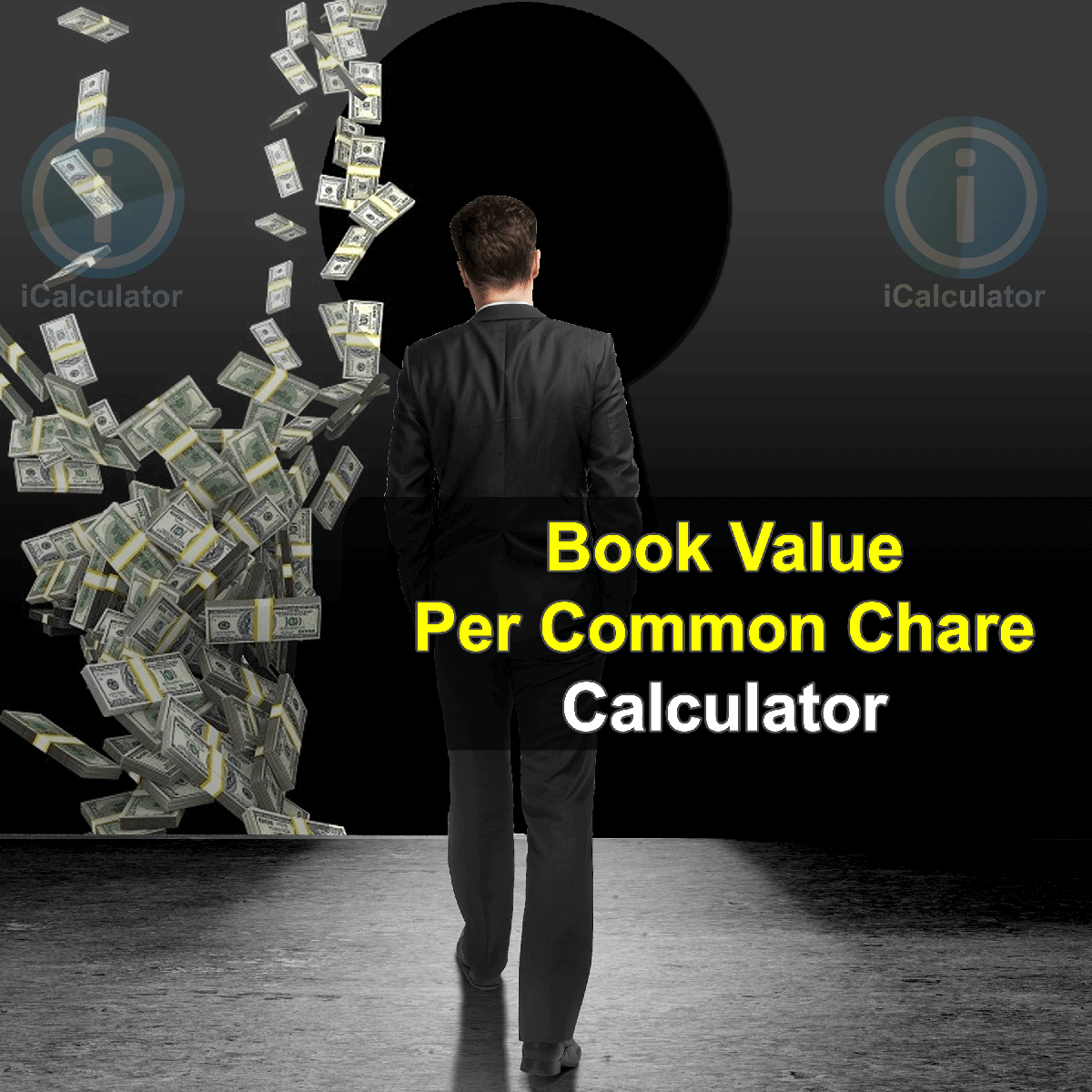Menu
Book Value per Common Share Calculator | BVPS Calculator
The Book Value per Common Share Calculator allows you to calculate the per-share value of a company based on common shareholders' equity in a company.
| Book value per Share |
Please provide a rating, it takes seconds and helps us to keep this resource free for all to use
Book Value Per Common Share Ratio Reflects the True Market Value of Your Company's Stock

The market rate of a company's stock defines the price a shareholder is willing to pay for a company's shares. On the other hand the book value per common share shows the real value of a company's stock. When compared to the market value the book value per common share can show us how a company's stock is valued.
Book value per common share or book value per share method calculates the per share value of a company's stock based on common shareholder's equity in the company. This is the value that will remain for the common shareholders after the liquidation of all assets and clearing all the debts, in case the company dissolves. Let's have a look at the calculation method of this ratio.
Calculating book value per common share
You can calculate the book value per common share using the following formula:
It can be broken down to two following steps:
The first step: The preferred stock is subtracted from the total shareholders' equity in the first step. The reason behind this deduction is because as the name suggests the preferred stock are paid first as soon as the debts are paid. This will leave behind the book value of the company.
The second step: The second step is to divide the results by the total shares outstanding.
Understanding the above said calculations are crucial for you if you are going to calculate it manually. Alternatively, you can do these calculations using an online calculator such as book value per common share calculator created by iCalculator. Let's have a look at how a calculator will do this for you.
How to use the calculator to measure your book value per common share
Enter the following details into the calculator:
- Stockholders' equity: Enter the number as per calculations explained above.
- Preferred stock: Enter the value of preferred equity.
- Total outstanding shares: The number of total outstanding shares in the company to be entered here.
On the basis of above inputs the calculator will provide you with book value per common share. The book value per common share calculator is designed by iCalculator to reduce your stress of manual calculations. Besides the obvious advantages like the ease of use and guarantee of precision there are various other benefits you can derive from the calculator. Learn about them below:
The results: The calculator will show you the book value per share of your company, which can be used to compare with the market value of your stock. If the book value per share exceeds the market value, the company's stock is considered undervalued.
- The Next steps: By assessing the value of your stock you can decide on what to do next, for example, if the stock of the company is undervalued the steps towards increasing the branch value could be useful.
- The Book value: The results from the calculator can be used to compare your company's book value per common share with other companies thus enabling you to take necessary measures for improvement.
Advantages and drawbacks of Book value per common share
- For investors: The book value per common share is important for the investors. If they can have access to a company's book value, it will become quite easier for them to decide on the market value and if it is worth the investment.
- BVPS and ROE: The book value per common share can also be used in calculating the return in equity method (ROE) when it is being used on a per share basis. ROE per share can be calculated by the following formula:
Despite these advantages, there are some drawbacks of using this method, such as:
- Book value of assets: This method only takes the book value of the assets, which means it ignores the value of intangible assets. This can result in wrong evaluation of certain companies like, banks of tech companies, which owns very few tangible assets relative to their intellectual properties. These intangible assets may not always be factored into the book value calculation.
- Comparison with market value: The market value per share is a measure that runs on the forward looking beliefs of the investment community about the value of a company's stock. On the other hand the book value per share is an accounting measure, it is not ideal to compare both measures.
Finance Calculators
You may also find the following Finance calculators useful.
- Annual Amortization Calculator
- Rental Property Calculator
- Capital Asset Pricing Model Calculator
- Timesheet Calculator
- Annual Percentage Yield Calculator
- Student Budget Calculator
- Roi Calculator
- Adjusted Present Value Calculator
- Credit Card Debt Payoff Calculator
- Annuity Calculator
- Compound Interest Calculator
- Combined Dividend And Paye Calculator
- Insolvency Calculator
- Straight Line Depreciation Calculator
- Discounted Payback Period Calculator
- Creditline Transfer Apr Calculator
- Discount Tire Calculator
- Credit Card Minimum Payment Calculator
- Simple Annuity Calculator
- Discount Factor Calculator